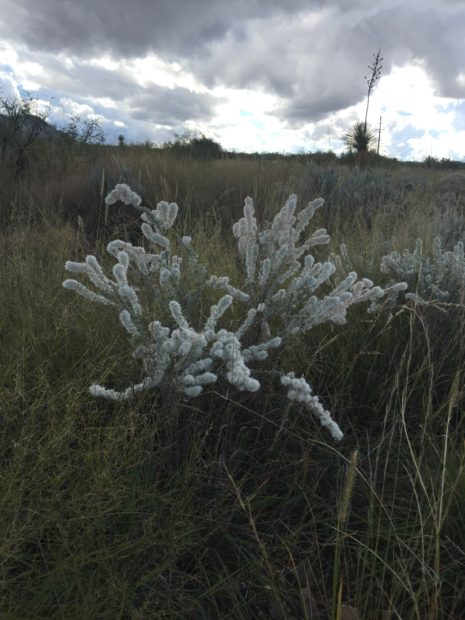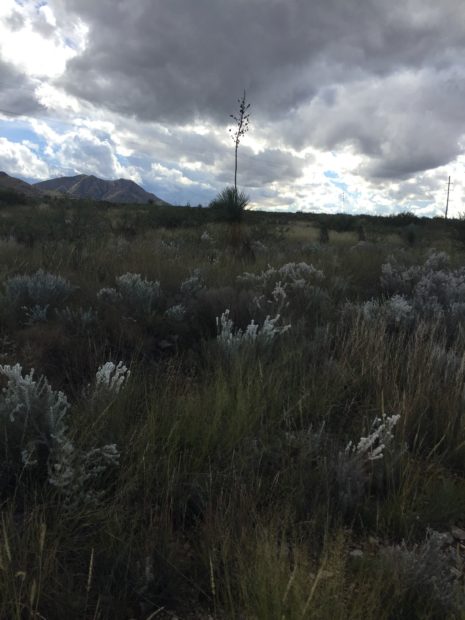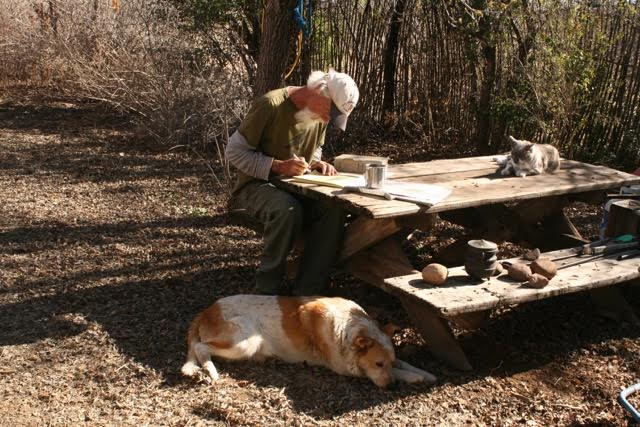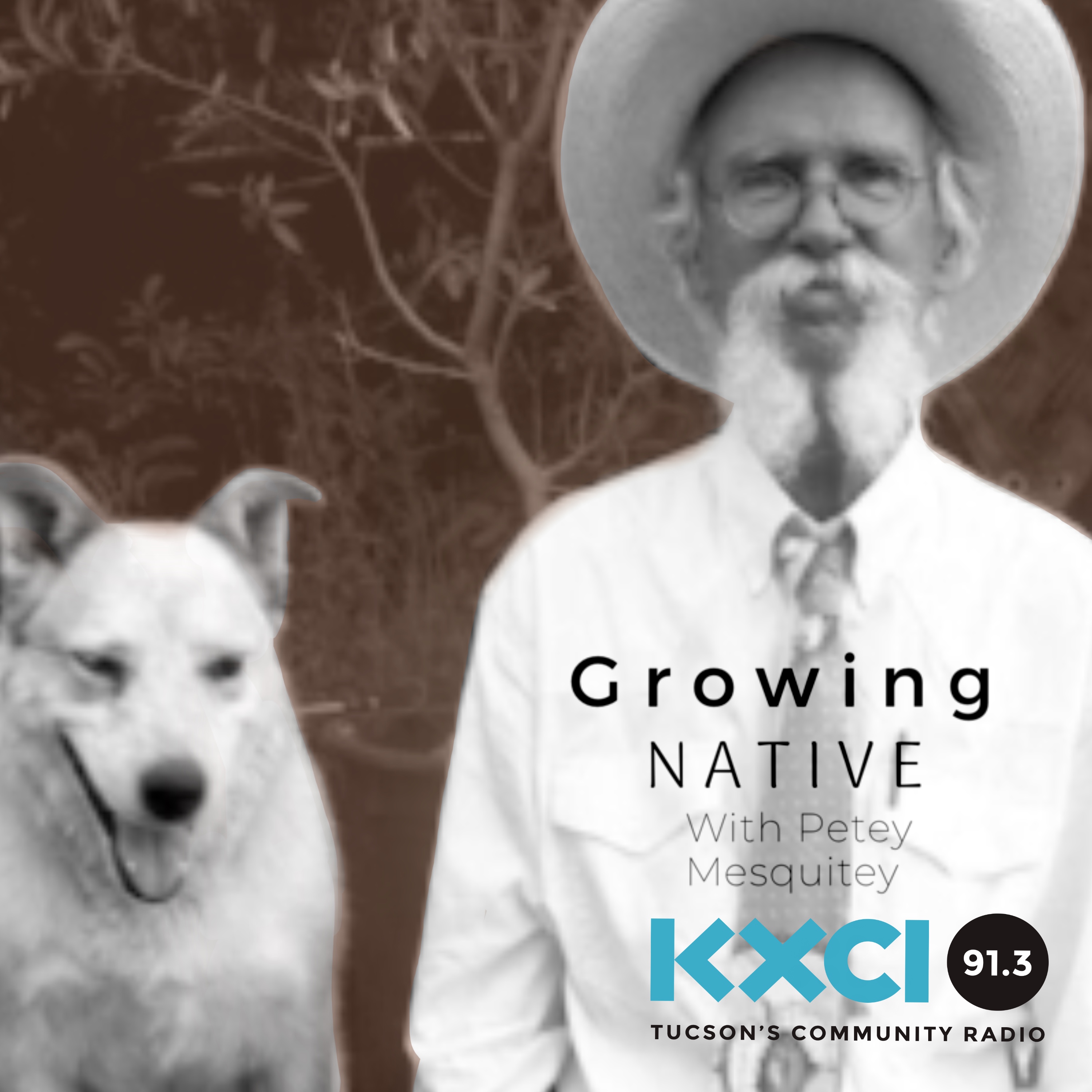I think it’s fascinating that there are several species of winterfat found in Eurasia and Europe. That’s where the genus was first described by a German botanist in the 1770s and named in honor of the Russian explorer and naturalist Stepan Petrovich Krascheninnikov. And it’s probably just me, but when you add the ia to make the Latinized botanical name Krascheninnikovia, you get seven syllables. I love words or names with seven syllables…okay, it is just me.
Anyway, the specific epithet for our North American winterfat is lanata and refers to the wooly seed stalks, which by the way are pretty neat in a dry floral arrangement along with some buckwheat (Eriogonum spp…maybe wrightii) and a native bunch grass like bull grass (Muhlenbergia emersleyi). Okay, that’s just me.
I find winterfat in alkaline fields or mesas near favorite limestone slopes. It’s always mixed in with grasses and other interesting plants like littleleaf sumac (Rhus microphylla) or soaptree yucca (Yucca elata)

The photos are mine. Dark storm clouds were overhead and large rain drops were splattering me while I was taking them. I like how the lighting enhances the wooly white seed heads. I’m thinking winter fat would be a nice addition to a moonlight garden… I know, that’s just me.


A hike in the nearby sky islands has Petey excitedly stumbling over plant names while giggling and jabbering away. Better listen.

It was the American botanist Soreno Watson, that named the onion collected in Tanner’s Canyon of the Huachuca Mountains to honor Sara Plummer Lemmon....

There are a couple other species of Eysenhardtia found over in Texas and more species as you head into Mexico and as far south...